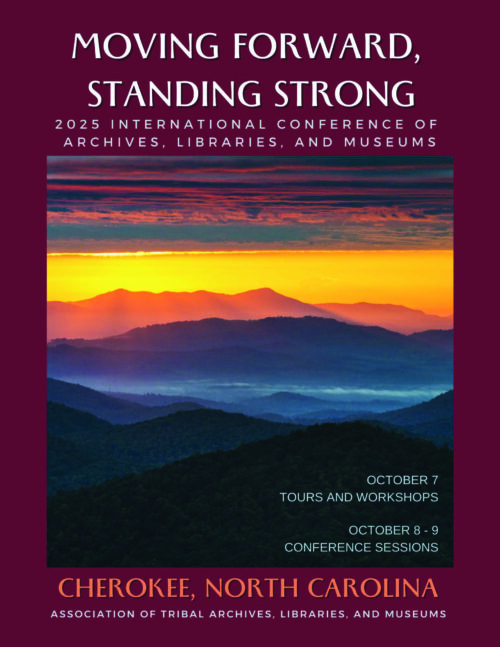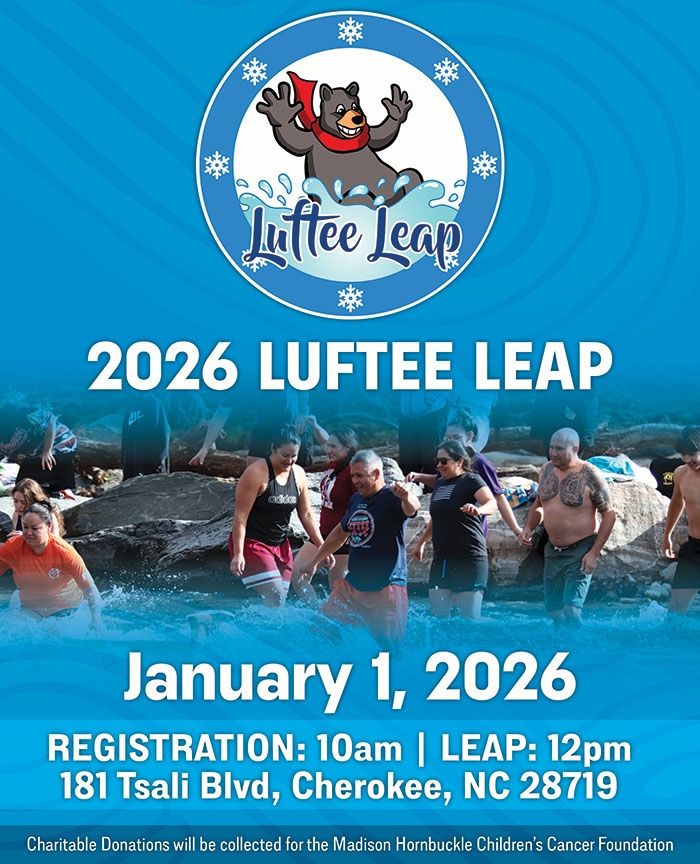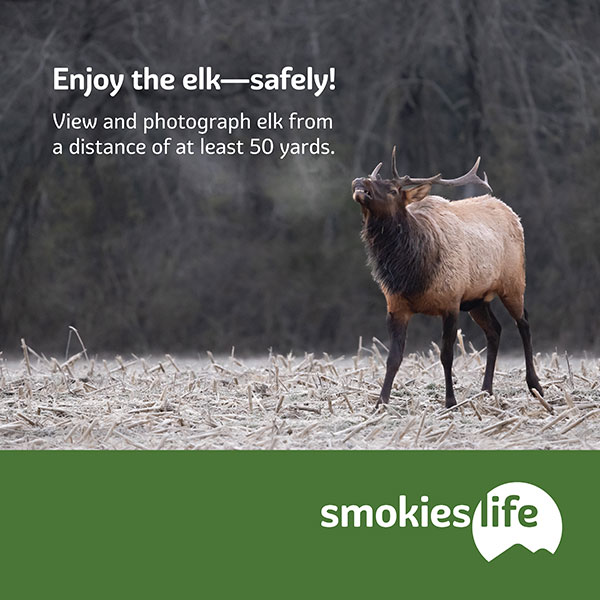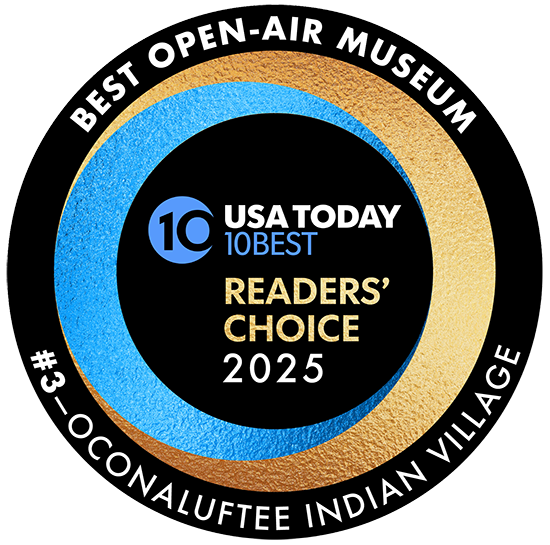By SCOTT MCKIE B.P.
One Feather Asst. Editor
CHEROKEE, N.C. – Over 1,500 people working in the field of tribal archives, libraries, and museums will convene in Cherokee in two months for a conference with the slogan of “Moving Forward, Standing Strong”. The Eastern Band of Cherokee Indians (EBCI) is set to host the annual conference of the Association of Tribal Archives, Libraries, and Museums (ATALM) at Harrah’s Cherokee Casino Resort in Cherokee, N.C. on Oct. 7-9.
 Shana Bushyhead Condill, Museum of the Cherokee People (MotCP) executive director, is this year’s Conference chairperson, and Michael Slee, MotCP director of operations, and Evan Mathis, MotCP director of collections and exhibitions, are both serving on the Local Arrangement Committee.
Shana Bushyhead Condill, Museum of the Cherokee People (MotCP) executive director, is this year’s Conference chairperson, and Michael Slee, MotCP director of operations, and Evan Mathis, MotCP director of collections and exhibitions, are both serving on the Local Arrangement Committee.
Conference attendees will get to learn more about the EBCI through several cultural field trip opportunities including visits to the Museum of the Cherokee People, Oconaluftee Indian Village, and the McClung Museum of Natural History and Culture in Knoxville, Tenn.
The MotCP will host several summits during the event including:
- Indigenizing Collections Care from a Cherokee-centric Perspective. Oct. 9 from 10:45 a.m. to 11:45 a.m. Information from the MotCP states, “This session provides practical guidance for building culturally competent collections teams and policies rooted in ethical stewardship.” This will be led by Evan Mathis; Dakota Brown, MotCP director of education; and Lily Huskey (Nee’ Wright), MotCP registrar
- Navigating Native Histories: Public Spaces and Dialogue. Oct. 9 from 2:15 p.m. to 3:15 p.m. Information from the Museum states, “This session explores the challenges of commemorating the 250th anniversary of the Declaration of Independence, considering the historical context and Indigenous perspectives.” This will be led by Condill and Brandon Dillard (Cherokee Nation), director of historic interpretation and audience engagement at Thomas Jefferson’s Monticello.
- Homelands: Building Meaning Collaboration with Native Partners in an Academic Museum. Oct. 9 from 3:45 p.m. to 4:45 p.m. Information from the Museum states, “This session will explore ‘Homelands’, an exhibition developed through a partnership between representatives from four Native Nations and the McClung Museum at the University of Tennessee, Knoxville.” This will be led by Brown; Dr. Sadie Counts, curator of Indigenous collections/assistant curator of exhibitions at the McClung Museum of Natural History and Culture, University of Tennessee, Knoxville; Raynella Fontenot (Coushatta Tribe of Louisiana), tribal archivist with the Coushatta Tribe of Louisiana; RaeLynn Butler {Muscogee (Creek) Nation}, secretary of culture and humanities with the Muscogee (Creek) Nation; and Elizabeth Toombs (Cherokee Nation), tribal historic preservation officer with the Cherokee Nation.
The EBCI will host a Cherokee Social Dance in the Harrah’s Cherokee Casino Event Center on Oct. 7 at 6:30 p.m.
On the Social, Condill noted, “The idea of having multiple tribes coming together and sharing songs and that kind of thing, I think it’s so impactful. That’s going to be something…imagining a bunch of Native people from all over the country coming together and being in relationship that way, I think is just going to be really powerful. So, that’s one of the things that we’re most proud of.”
Slee is organizing that event and commented, “A lot of times when we go to these conferences one of the coolest things is being in a tribal community’s community and being with other Native people. But, there wasn’t a lot of cultural exchange is what I noticed. I thought, ‘how cool would it be to really immerse people and get to have a social and dance with everybody? Of course, anybody that’s there and wants to share would be welcome to do that as well. I’m excited to get a bunch of Natives in the same room and sing and be happy with each other.”
Condill said that networking and sharing ideas with other Native professionals is what the Conference is all about. “As we started thinking about our capital projects, there are tons of tribal museums that are doing this work already. So, learning from them and getting experience from other folks that have gone through the process has been a wonderful asset to have that came from it.”
She added, “We take inspiration from tribal museums who use a first voice perspective. But, there are other tribal museums who are kind of in our same situation, targeting a tourist audience. So, that’s also been nice, too, to have those conversations…we’re not just the only ones who are having to intentionally make that transition…it’s always nice to be like, ‘how did you guys do it?’…community engagement versus audience development. That’s two very different things. So, we’ve thought a lot about audience development here at the Museum over the years. But community engagement is so much harder.”
Mathis commented, “We see people from all over North America, which is really cool. It’s kind of like a big homecoming, almost, because you get to see all these people that you talk to regularly through social media or on the phone.”
He said the Conference is always a great place for learning. “The other thing that’s really helpful with ATALM is they have the hands-on workshops. So, we’ve learned how to build archival boxes. We’ve learned how to rehouse a book and make safety housing for a book if it’s really fragile. Cleaning – that’s a big thing. So, all these people from NMAI and the Field (Museum) and these really large institutions, they’re coming to those spaces and doing hands-on workshops to show us even how to clean feathers, archivally, which looks a lot different than maybe how we would do it at home. So, it’s been really helpful for that, too, the knowledge-sharing that they provide.”
On the “Indigenizing Collections Care” session he, Brown, and Wright are leading, Mathis noted, “We’ll be talking about working with the community, how important that is, how we organize our collections which is loosely by object type but the most important thing we organize by is by family and maker and community. So, when we rehouse our collections to be by family that’s not something you normally do in museums, but it makes a lot of sense for us because when our community comes for collections tours they, obviously, want to see their family’s materials.”
The dates of the Conference do coincide with the Cherokee Indian Fair – a situation that Slee hopes will show participants a fuller view of the EBCI. “It’s cool because hopefully the Conference participants will have time to get to experience our Fair. Of course, we’re really proud of our Fair and what it means to our community as a lot of tribal fairs mean to other Indigenous communities. Our culture will be on full display that week. So, hopefully they get some time to catch some stickball games and maybe try some Cherokee food. It’s good in that way that they’re going to be there for that. It’s going to be a really busy week for us because of it, but we’re happy that they’re going to get to experience it to some degree.”
For more information, visit: https://www.atalm.org/conference-2025/





